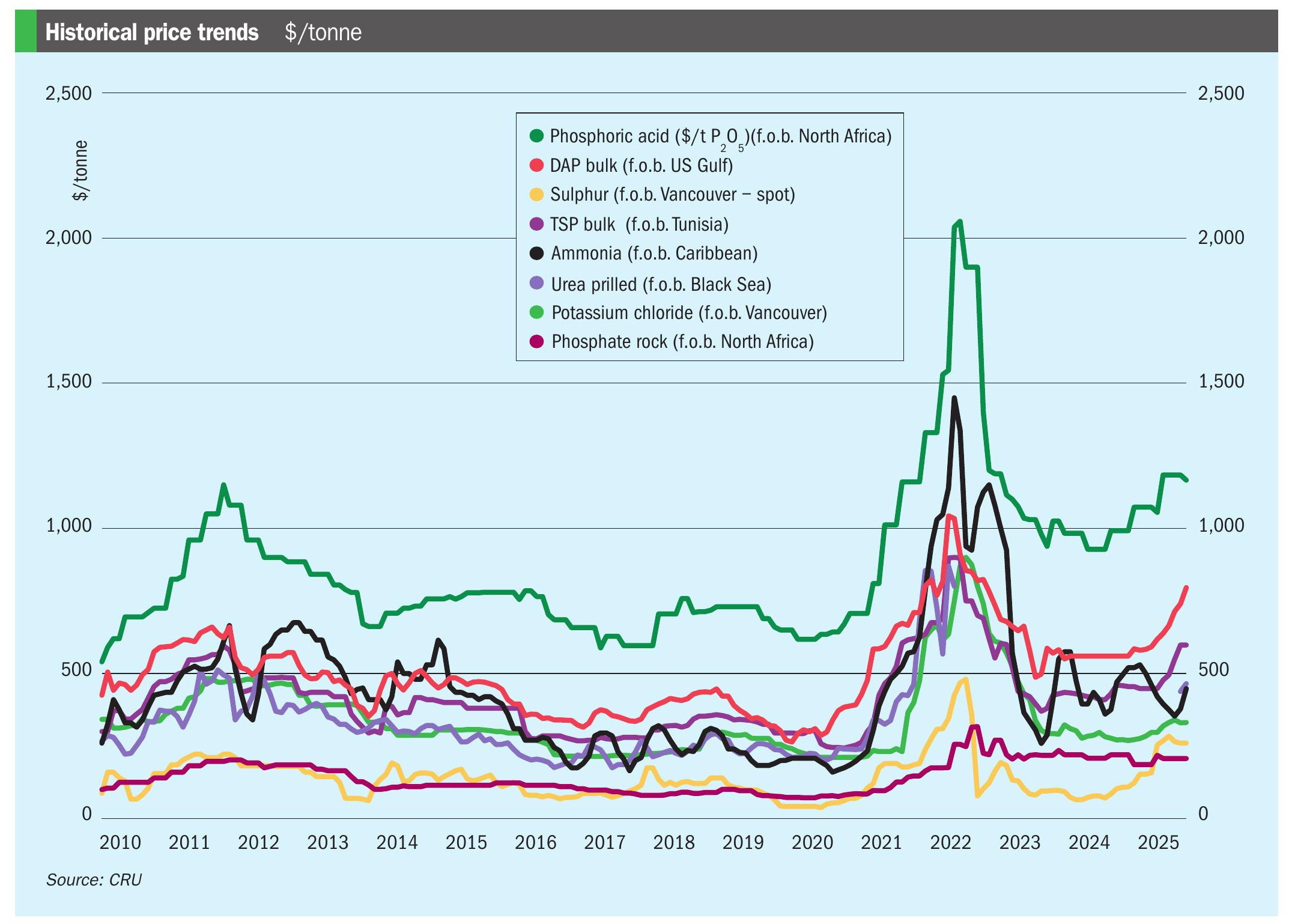Nitrogen+Syngas 391 Sep-Oct 2024

30 September 2024
Price Trends
Price Trends
Ammonia benchmarks west of Suez remain supported by limited availability at key regional export hubs amid increased potential for cargoes to arrive from the East, where availability is far healthier, and prices appear under pressure. The disparity in prices was illustrated towards the end of August, when Nutrien sold 25,000 tonnes to multiple buyers in NW Europe for 1H September delivery at $550-555/t c.fr. When netted back to Trinidad, the price marks a sizeable premium on the $375/t f.o.b. last achieved by Nutrien back in late June, although given that last business in Algeria was fixed at $520/t f.o.b., it appears there is room for delivered sales into Europe to move up further. Regional availability is still limited, with extreme weather conditions in the US Gulf and North Africa potentially impacting supply further over the coming weeks.
East of Suez, all eyes were on India, where FACT was tentatively suggested to have awarded its latest purchase tender at $415/t c.fr, amid healthy demand from downstream Indian phosphate fertilizer producers ahead of the forthcoming Kharif season. That demand should be satisfied in large part by the Middle East, where Ma’aden again expects to export 175,000 tonnes in September. Demand elsewhere in the region remains subdued, with spot interest from South Korea and Taiwan.
In Malaysia, Petronas may have some spot availability moving into the latter half of August and early September, amid a healthy production outlook. Talk has again emerged of some minor output issues in Indonesia, though these are unlikely to pose a major impact to overall supply or indeed prices.
In urea markets, India’s latest import tender was confirmed for 29 August closing, but with a long shipment window, with NFL seeking to secure tonnage through to end October. This was viewed as a bearish signal as it should increase dramatically the volume offered to NFL. The tender could still exclude any significant volume from China. While exports are expected to emerge in October, there may be no clarity from the Chinese government by the closing date of the Indian tender and with no certainty that exports will be allowed, traders will not want to risk any short sales. Supply could then be focused on the Middle East and Russia and, with no certainty of Indian’s next move after this tender, could look to secure sales to provide a solid platform of exports for the start of Q4.
Other markets are still slow to come forward. Brazil saw offers pushed to $360365/t c.fr on news from India but buyers have yet to respond. They may step up fearing India will take out all the excess tonnes from Russia and the Middle East for September and October – months when Brazil usually has a very heavy line up to meet forward demand. Europe is still slow to step up. Sales that are being seen are some way below Egyptian aspirations of $360/t f.o.b. The UK and Italy has taken product that looks to reflect closer to $330-340/t f.o.b.

END OF MONTH SPOT PRICES
natural gas

ammonia

urea

diammonium phosphate







